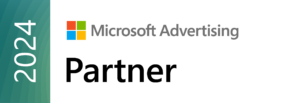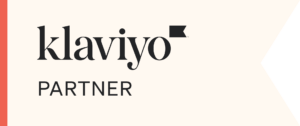Email marketing continues to be a powerful tool for businesses, allowing you to connect with your customers directly and deliver targeted messages.
While privacy regulations are making it more difficult to target digital ads, building a robust email marketing program lets your customers share information with you directly. Capturing that first-party information is a smart and sustainable way to stay connected with your customers.
Whether you’re building your email marketing program from scratch or taking over an existing subscriber base, there are many important tasks vying for your attention: building your list, designing your templates, creating a content calendar, building your analytics dashboard, and the list goes on.
But don’t overlook segmentation.
Segmentation involves dividing your subscriber list into distinct groups based on specific criteria.
In this article, we will explore different types of basic email segmentation that every company should build and use the maximize the impact of their email marketing campaigns.
Engagement-Based Segmentation
Understanding the engagement level of your subscribers is crucial for effective email segmentation. If you’re taking over an established subscriber base, some of your subscribers open almost every email you send, but there are probably many more that don’t.
In fact, a large portion of your subscriber base is probably unengaged or dormant. By segmenting your audience based on their engagement, you can tailor your messages and offers to better resonate with each group.
Here are the different segments you can create based on engagement:
- Active: These are subscribers who regularly open and interact with your emails. They demonstrate a high level of engagement and are more likely to respond positively to your offers.
- Engaged: These subscribers may not be as active as the “Active” segment but still show consistent interest in your emails. They represent an opportunity for further nurturing and potential conversions.
- Unengaged: This segment includes subscribers who have shown decreasing engagement or have stopped interacting with your emails altogether. Targeted re-engagement campaigns can be designed specifically for this segment to win them back.
- Dormant: These subscribers have been inactive for an extended period. Reviving their interest may require a personalized approach, such as offering exclusive incentives or tailored content.
- Never Engaged: This segment comprises subscribers who have never shown any engagement with your emails. It is essential to evaluate the effectiveness of your acquisition strategy and consider alternative approaches to connect with them.
The criteria you use to define each of these engagement segments is up to you, but your email service provider (ESP) may offer pre-defined engagement segmentation out of the box. If you’re building your engagement definitions on your own, here’s a helpful guide to get started.
| Segment Title | Active | Engaged | Unengaged | Dormant | Never Engaged |
| Definition | Have opened or clicked an email in the last 30 days or subscribed in the last 30 days | Last opened or clicked an email between 30 and 90 days ago | Last opened or clicked an email between 90 and 180 days ago | Last opened or clicked an email between 180 and 365 days ago | Never opened an email and subscribed more than 90 days ago |
When building segment definitions, it’s important to include opening and clicking an email as engagement signals because of Mail Privacy Protection in iOS 14.
As part of Apple’s software update, ESPs can no longer reliably determine whether or not a recipient opened an email, so putting too much emphasis on your open rates alone can give you a false impression of how much of your audience is actually engaged. That’s why including clicks in your definition is so important — it’s a true engagement signal that shows a contact has opened your email and was interested enough to click through.
Purchase-Behavior Segmentation
Segmenting for engagement is important, but it’s also important to understand your subscribers’ purchasing patterns. Segmenting based on a contact’s purchasing behavior allows you to create highly targeted email campaigns that deliver the kind of content your contacts are looking for, including relevant product recommendations, promotions, and follow-ups.
Here are some key segments to consider:
- Purchase History: Categorize subscribers based on their past purchase behavior. This enables you to send personalized recommendations, cross-sell, or upsell related products, and nurture customer loyalty.
- Abandoned Cart: Target subscribers who added items to their cart but did not complete the purchase. By sending timely reminders or offering incentives, you can increase the chances of conversion and recover potential lost revenue.
- Type of Purchase: Segment subscribers based on the type of products they have purchased. This allows you to send targeted offers related to their interests and preferences.
- Never Purchased: Identify subscribers who have not made a purchase yet. Create dedicated email sequences to showcase your products, highlight customer reviews, and address any potential barriers to purchase.
- Purchasing Frequency: Segment subscribers based on their frequency of purchases. Tailor your messaging and offers to their buying habits, whether they are frequent buyers or occasional shoppers.
Browsing Behavior/Website Activity
Segmenting based on browsing behavior and website activity provides insights into subscribers’ interests and preferences. By monitoring the pages they visit, products they browse, or actions they take on your website, you can personalize their email experience and enhance engagement.
Go to your website and make note of your high-value pages — a product detail page is a good example. If a contact shows interest in a particular product by visiting the product detail page, you can feature that product in the emails you send to them.
Content Interests
Segmenting based on content interests allows you to send targeted emails that align with subscribers’ preferences. By analyzing the types of content they engage with, such as blog posts, ebooks, or webinars, you can deliver relevant information and nurture them through the marketing funnel.
Another benefit of segmenting by content interest is lowering the chances of a contact unsubscribing or marking your email as spam. One of the main reasons people unsubscribe from a mailing list is because they receive too many emails that aren’t relevant to them. Segmenting by interest ensures that the right people receive the right messages.
Email segmentation is a fundamental strategy for maximizing the effectiveness of your marketing campaigns. By dividing your subscriber list into various segments, such as engagement-based, purchase behavior, browsing behavior, and content interests, you can deliver highly personalized and relevant messages that resonate with your audience.
Implementing these segmentation strategies will help you improve open rates, click-through rates, and conversions, ultimately driving the success of your email marketing efforts.







